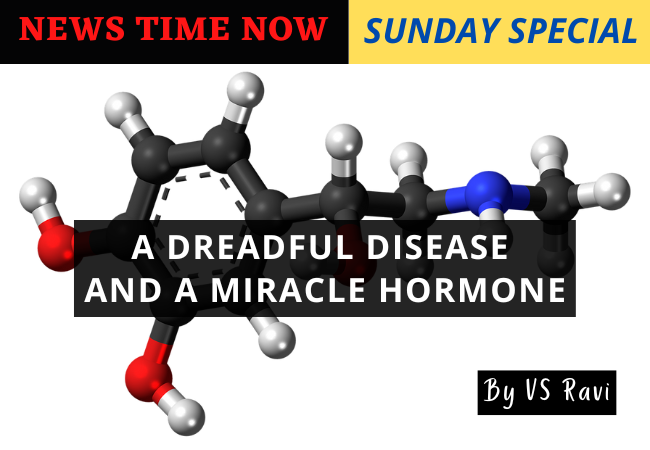Diabetes is a chronic disease that occurs either when the pancreas does not produce enough insulin (the hormone it produces) or when the body cannot effectively use the insulin. Classic symptoms include thirst, polyuria, weight loss, and blurred vision. If left untreated, the disease can lead to various health complications, including disorders of the cardiovascular system, eye, kidney, and nerves. Untreated or poorly treated diabetes accounts for approximately 1.5 million deaths every year.
About 537 million adults across the world have diabetes. Experts predict this number will rise to 643 million by 2030 and 783 million by 2045. Approximately 37.3 million people in the United States have diabetes, which is about 11% of the population. Type 2 diabetes is the most common form, representing 90% to 95% of all diabetes cases.
Early diagnosis can be accomplished through relatively inexpensive testing of blood glucose. People with type 1 diabetes need insulin injections for survival. One of the most important ways to treat diabetes is to keep a healthy lifestyle.
Some people with type 2 diabetes will need to take medicines to help manage their blood sugar levels. These can include insulin injections or other medicines. Some examples include:
- metformin
- sulfonylureas
- sodium-glucose co-transporters type 2 (SGLT-2) inhibitors.
Along with medicines to lower blood sugar, people with diabetes often need medications to lower their blood pressure and statins to reduce the risk of complications.
Additional medical care may be needed to treat the effects of diabetes:
- foot care to treat ulcers
- screening and treatment for kidney disease
- eye exams to screen for retinopathy (which causes blindness
On the other hand low blood sugar can cause tiredness, shaking, and many other symptoms – the classic symptoms of hypoglycaemia. It can be life threatening in severe cases. There are numerous possible causes of hypoglycemia. In severe cases, low blood sugar, or glucose, may lead to coma and death.
Hypoglycemia can also occur with several conditions, but it happens as a reaction to diabetes medications.
Banting was a Canadian physiologist who discovered insulin. For this achievement he was awarded the Nobel Prize for Physiology or Medicine in 1923, which he shared with the Scottish physiologist John Macleod (1876-1935).
Banting was born in Alliston, Ontario, on 14 November 1891, the son of a farmer. He went to the University of Toronto in 1910 to study for the ministry, but changed to medicine and obtained his medical degree in 1916. He served overseas as an officer in the Canadian Medical Corps during World War I, and was awarded the Military Cross for gallantry in 1918. After the war he held an appointment at the University of Western Ontario, but in 1921 returned to the University of Toronto to carry out research into dia-betes. In 1930 the Banting and Best Department of Medical Research was opened at the University of Toronto, of which Banting became director. He was knighted in 1934. While serving as a major in the Canadian Army Medical Corps in 1941 he was killed in an air crash at Gander, Newfoundland.
At the University of Western Ontario, Banting became interested in diabetes, a disease usually fatal at that time.
In 1889 Mehring and Minkowski had shown that the pancreas was somehow involved in diabetes because the removal of the pancreas from a dog resulted in its death within a few weeks. Other workers had investigated the effect of tying off the pancreatic duct in rabbits, which resulted in atrophy of the pancreas apart from small patches of cells – the islets of Langerhans. The rabbits did not, however, develop the diuretic condition of sugar in the urine.
It had therefore been suggested that a hormone called insulin ( from the Latin for island of Langerhans) might be concerned and that it’s source might be the islets of langerhans. But efforts to isolate the hormone from the pancreas failed because the digestive enzymes produced by the pancreas broke down the insulin when the gland was processed In1921 Banting went to discuss his ideas on the matter with John Macleod , the chairman of the physiology department (and an expert on the metabolism of carbohydrates) at the University of Toronto. Macleod was unenthusiastic but agreed to find Banting a place for research in his laboratories.
Banting reasoned that if the pancreas were destroyed but the islets of Langerhans retained, the absence of digestive enzymes would allow them to isolate insulin.
With Charles Best (1899-1978), one of his undergraduate students he experimented on dogs. They put several of the animals into two groups; each dog in one group had the pancreatic duct tied, and those in the other group were depancreatized. After several weeks, they removed the degenerated pancreases from the dogs of the first group, extracted the glands with saline and injected the extract into the dogs of the second group, which by then had diabetes and were in poor condition.
They took regular blood samples from the diabetic dogs and found that the sugar content dropped steadily as the condition of the dogs improved.
These results encouraged Banting. He obtained foetal pancreas material from an abattoir, thinking that it might contain more islet tissue. With his assistants he set about extracting an active product, but purification proved to be very difficult. Eventually reasonably pure condition insulin was produced and commercial production of the hormone started. By January 1922 it was ready for use in the Toronto General Hospital. The first patient was a 14-year-old diabetic boy who showed rapid improvement after treatment. They also discovered that the dose of insulin could be reduced by regulating the amount of carbohydrate in the patient’s diet.
When Banting and Macleod were awarded the Nobel prize for this work Banting, feeling strongly that Best had made a valuable contribution, made a magnanimous gesture in dividing his share of the money with him. Banting’s discovery of insulin and his attempts to purify the crude material led eventually to the commercial production of insulin, which has saved the lives of millions of diabetics.
Insulin has produced as great a revolution in treating Diabetes as Penicillin and other antibiotics have in fighting bacterial infections- with one difference. While a course of antibiotics can be stopped after treating an infection, insulin has to administered to a diabetic throughout his life.


















































